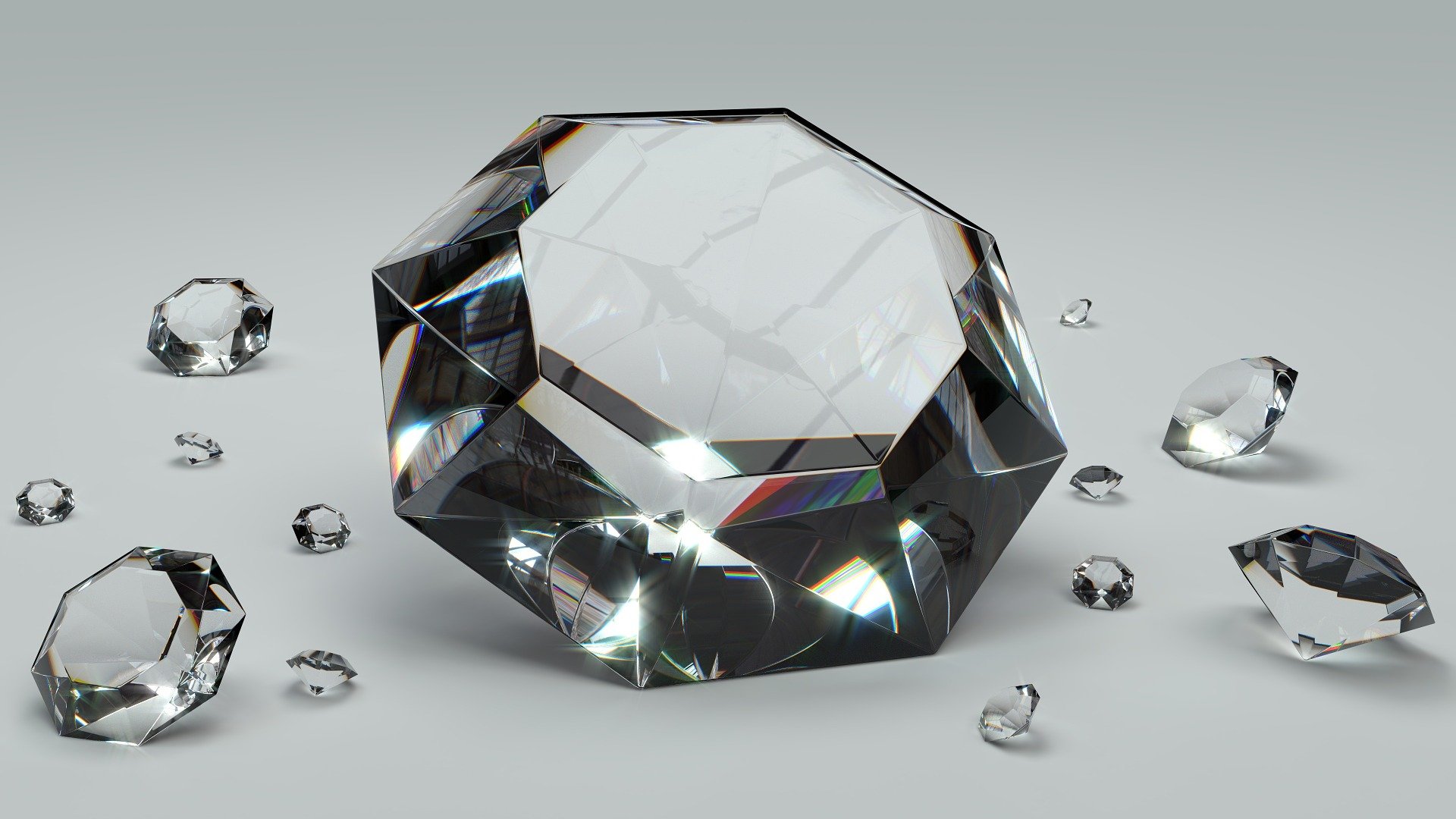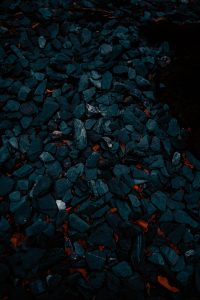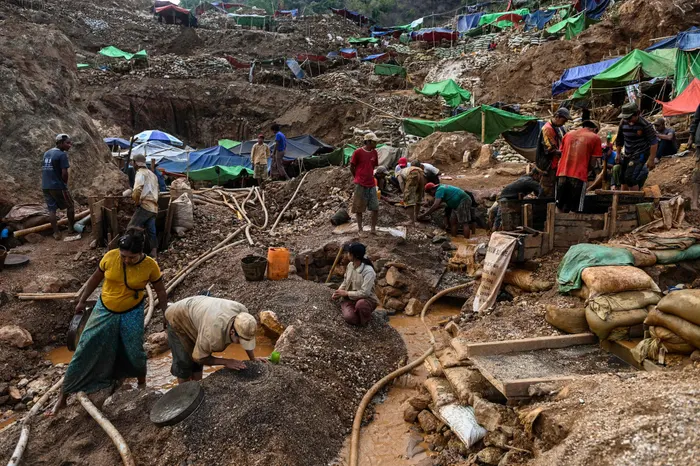Diamonds are one of the most precious and coveted materials on Earth, known for their incredible beauty and value. They are formed deep within the Earth’s mantle under intense heat and pressure and are made up of pure carbon atoms arranged in a unique crystal lattice structure. On the other hand, coal is a common fossil fuel formed from the remains of ancient plants and animals that have been buried and compressed over time.
Properties of Diamond
- Hardness: Diamond is the hardest known natural material, with a score of 10 on the Mohs scale of mineral hardness. This means that it cannot be scratched by any other substance except another diamond. Its exceptional hardness makes it highly durable and resistant to wear.
- Transparency: Diamond is highly transparent, allowing light to pass through it and creating a characteristic sparkle or “fire” that is highly prized in jewelry. It also has a very high refractive index, which means that it bends and reflects light in a distinctive way.
- Thermal conductivity: Diamond has the highest thermal conductivity of any known material, meaning it can transfer heat very efficiently. This property makes diamonds useful in industrial applications such as cutting and polishing tools, as well as in electronic devices that require efficient heat dissipation.
- Electrical insulator: Diamond is an excellent electrical insulator, meaning it does not conduct electricity. This property, combined with its high thermal conductivity, makes diamond useful in high-power electronics such as transistors and power diodes.
- Chemical stability: Diamond is highly resistant to chemical attack, meaning it does not react easily with other substances. This makes it useful in a variety of industrial applications where chemical stability is important.
 Properties of Coal
Properties of Coal
- Carbon content: Coal is primarily composed of carbon, which gives it its combustible properties. The carbon content of coal can vary depending on the type and quality of the coal, but it typically ranges from around 45% to 95%.
- Energy content: The energy content of coal is measured in British thermal units (BTUs) per pound. The higher the BTU content, the more energy the coal contains. Bituminous coal, which is the most common type of coal, typically contains around 24 to 28 million BTUs per ton.
- Density: Coal is a relatively dense material, with a typical density of around 1.3 to 1.5 grams per cubic centimeter.
- Combustibility: Coal is highly combustible, meaning it can be burned to produce heat and energy. The specific combustion properties of coal can vary depending on its type and quality, but all coal can be used as a fuel source.
- Impurities: Coal often contains various impurities, such as sulfur, nitrogen, and ash. These impurities can have negative environmental and health effects when the coal is burned, and they can also affect the efficiency of the combustion process.
The Science Behind Diamond Formation
Diamonds are formed deep within the Earth’s mantle, which is the layer between the Earth’s crust and core. The process of diamond formation involves a combination of high pressure and high temperature, as well as the presence of carbon-rich fluids that are capable of dissolving carbon from surrounding rocks.
The most widely accepted theory of diamond formation is called the “diamond stability field” model. According to this model, diamonds are formed from carbon-bearing fluids that rise from the lower mantle into the upper mantle, where they encounter areas of high pressure and temperature. These conditions cause the carbon to crystallize into a diamond, which is stable at these extreme depths and temperatures.
The exact process of diamond formation is not fully understood, but it is thought to occur over millions of years. Some scientists believe that diamonds are formed in situ, meaning that they crystallize directly from the carbon-rich fluids in the mantle. Others believe that diamonds are formed through a process called “crystallization from melt,” in which carbon-rich fluids melt and recrystallize existing minerals to form a diamond.
Once formed, diamonds can be brought to the Earth’s surface through volcanic eruptions or through the movement of tectonic plates. These processes can cause diamonds to be found in certain types of rocks, such as kimberlite and lamproite, which are often associated with diamond-bearing deposits.
 The Science Behind Coal Formation
The Science Behind Coal Formation
Coal is formed from the remains of ancient plants and animals that have been buried and compacted over millions of years. The process of coal formation is known as coalification and involves several stages:
- Plant material accumulation: Coal begins with the accumulation of dead plant material in a swamp or other wetland environment. Over time, the plant material accumulates and is buried under layers of sediment.
- Peat formation: As the plant material is buried, it is subjected to increasing pressure and temperature, which cause it to lose water and other volatile components. The result is a substance known as peat, which is a soft, brown material that is rich in carbon.
- Lignite formation: As the peat is buried deeper and subjected to higher temperatures and pressures, it undergoes a process of chemical and physical transformation. The result is a substance known as lignite, which is a darker, harder material that contains more carbon than peat.
- Sub-bituminous coal formation: With further burial and heating, lignite is transformed into sub-bituminous coal, which is a black, brittle material that contains even more carbon.
- Bituminous coal formation: With even greater heat and pressure, sub-bituminous coal is transformed into bituminous coal, which is a dense, black material that is widely used as a fuel source.
- Anthracite coal formation: With the highest heat and pressure, bituminous coal is transformed into anthracite coal, which is a hard, shiny material that contains the highest carbon content of any type of coal.
So, Can Diamonds Turn into Coal?
While both diamonds and coal are formed from carbon, diamonds cannot turn into coal. The reason for this is that the process of diamond formation requires very specific and extreme conditions of high pressure and high temperature that are not present in the formation of coal.

Furthermore, once diamonds are formed, they are extremely stable and resistant to change. It would take extremely high temperatures and pressures to break down the crystal structure of a diamond and transform it into a substance like coal, which is less crystalline and more amorphous in structure.
So, while diamonds and coal are both made of carbon, they are formed under very different conditions and cannot be transformed into each other.
Ever wondered whether diamonds can grow on quartz? Read it here.


 Properties of Coal
Properties of Coal The Science Behind Coal Formation
The Science Behind Coal Formation







